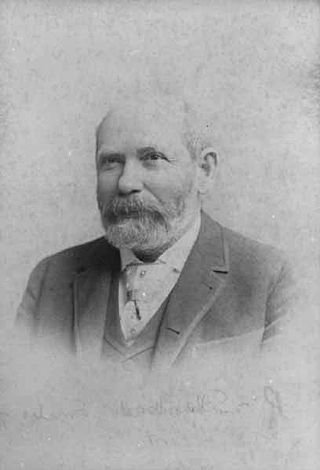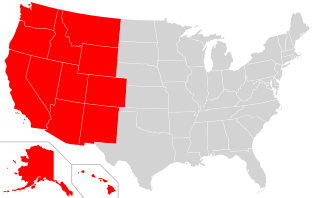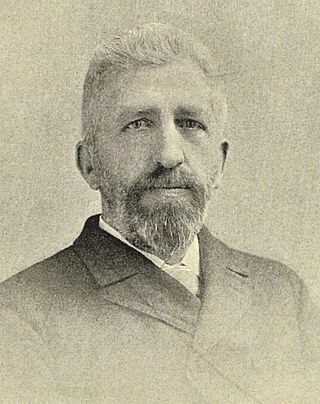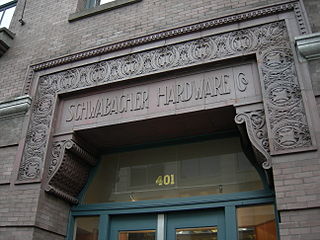
Bailey Gatzert was an American politician and the eighth mayor of Seattle, Washington, serving from 1875 to 1876. He was the first Jewish mayor of Seattle, narrowly missing being the first Jewish mayor of a major American city. As of 2022, he has been the only Jewish mayor of Seattle.

Congregation Emanu-El of New York is the first Reform Jewish congregation in New York City. It has served as a flagship congregation in the Reform branch of Judaism since its founding in 1845. The congregation uses Temple Emanu-El of New York, one of the largest synagogues in the world.

The 19th century saw Jews, like many other people, moving to the American West.
Congregation Beth Israel is an egalitarian Conservative synagogue located at 989 West 28th Avenue in Vancouver, British Columbia. It was founded in 1925, but did not formally incorporate until 1932. Its first rabbi was Ben Zion Bokser, hired that year. He was succeeded the following year by Samuel Cass (1933–1941). Other rabbis included David Kogen (1946–1955), Bert Woythaler (1956–1963), and Wilfred Solomon, who served for decades starting in 1964.

Stephen Wise Free Synagogue is a Reform Jewish synagogue at 30 West 68th Street in the Upper West Side of Manhattan in New York City, New York, U.S. The congregation was the first of multiple "free synagogue" branches in the early 20th century.
Beth Shalom or Beth Sholom may refer to:

Temple Emanu-El-Beth Sholom, Westmount is a Reform synagogue in Westmount, Quebec. The syngagoue is the oldest Liberal or Reform synagogue in Canada, incorporated on March 30, 1883, and is the only Reform congregation in Quebec.
Synagogues may be considered "oldest" based on different criteria, and can be oldest in the sense of oldest surviving building, or oldest in the sense of oldest congregation. Some old synagogue buildings have been in continuous use as synagogues, while others have been converted to other purposes, and others, such as the Touro Synagogue, were shuttered for many decades. Some early established congregations have been in continuous existence, while other early congregations have ceased to exist.

Jacob Furth was an Austrian Empire-born American entrepreneur and prominent Seattle banker. He played a key role in consolidating Seattle's electric power and public transportation infrastructure, and was a member of Ohaveth Sholum Congregation, Seattle's first synagogue. Bill Speidel called him "the city's leading citizen for thirty years," adding that Furth "may even have been the most important citizen Seattle ever had."

Temple De Hirsch Sinai is a Reform Jewish congregation with synagogues at campuses in Seattle and nearby Bellevue, Washington, in the United States. The congregation was formed as a 1971 merger between the earlier Temple De Hirsch and Temple Sinai and is the largest Reform congregation in the Pacific Northwest.

The Schwabacher Brothers—Louis Schwabacher, Abraham (Abe) Schwabacher, and Sigmund (Sig) Schwabacher —were pioneering Bavarian-born Jewish merchants, important in the economic development of the Washington Territory and later Washington state. They owned several businesses bearing their family name, first in San Francisco, then in Walla Walla, Washington, and later in Seattle. Notable among these businesses were Schwabacher Bros. of San Francisco ; Schwabacher Bros. & Company, the Schwabacher Realty Company, the Gatzert-Schwabacher Land Company, and the Schwabacher Hardware Company, all ultimately based in Seattle; and the Stockton Milling Company.

Nathan Eckstein was a German-born American businessman, associated in business and by marriage with the Schwabacher Brothers firm and family. In 1926 he received the honor of being named "Seattle's Most Useful Citizen", an honor sponsored by the Seattle Post-Intelligencer and chosen by service clubs and community organizations. At that time, Seattle's Jewish Transcript called him "the man who has brought the greatest amount of respect and prestige to the Jewish people of Seattle." Seattle's Nathan Eckstein Middle School is named in his honor.
Ohev Sholom, may refer to the following synagogues:










